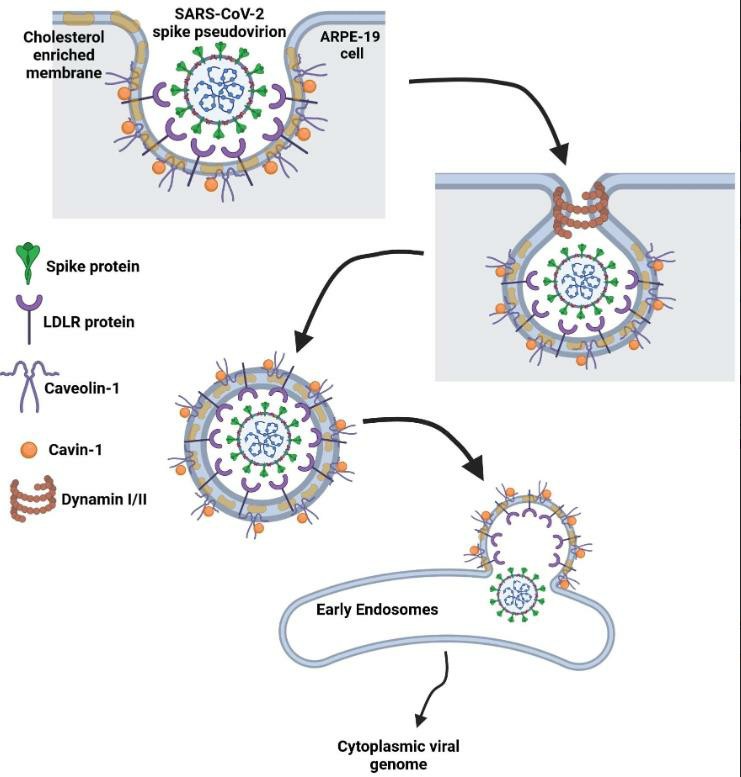What is LDLR Protein?
The low-density lipoprotein receptor (LDLR) is an essential cellular protein that plays a major role in cholesterol homeostasis, metabolism, and the pathogenesis of several diseases.
Background and Discovery of LDLR Protein
The discovery of the LDLR protein is a major breakthrough in molecular biology pioneered by Michael Brown and Joseph Goldstein in the 1970s. Their groundbreaking work earned them a Nobel Prize in Medicine in 1985. They identified the receptor's formation in the liver and discovered its crucial role in controlling the number of low-density lipoprotein (LDL) particles in the blood.
The LDLR gene is located on the short (p) arm of chromosome 19 at position 13.2, more specifically at 19p13.2. The gene is composed of 18 exons and spans approximately 45 kilobases. The LDLR protein is translated from the messenger RNA transcribed from the LDLR gene. In terms of molecular structure, it comprises 839 amino acids, forming a single polypeptide chain. The protein structure is divided into five distinct domains, indicating that multiple events contribute to efficient LDL particle uptake.
Function of LDLR protein
Functionally, the LDLR protein is crucial in maintaining cholesterol levels within the body. It is primarily found in the liver and peripheral tissues, playing a vital role in the uptake and recycling of cholesterol-laden low-density lipoproteins, also known as "bad cholesterol". The LDLR protein binds to LDL particles in the bloodstream and carries them into cells where they are broken down, and the cholesterol is released and used by the cell. This function helps to prevent the build-up of cholesterol in the blood, thus playing a critical role in guarding the body against atherosclerosis.
LDLR protein related signal pathway
The LDLR protein functions with coordination from several signaling pathways. One of the most significant is the SREBP pathway (Sterol Regulatory Element-Binding Protein), a primary regulator of lipid homeostasis. When cholesterol level in a cell is low, the SREBP pathway is activated, leading to the generation of mature SREBP, which binds to DNA and induces the transcription of several genes, LDLR being among them. This increases the production of LDLR, allowing a greater amount of LDL to be taken up by the cell, and increasing the cellular cholesterol level.

LDLR protein related diseases
Despite playing a significant part in maintaining physiological cholesterol levels, defects in the LDLR protein can lead to numerous diseases. The most notorious is Familial Hypercholesterolemia (FH), a genetic disorder characterized by significantly high cholesterol levels. Patients with FH have one or two defective copies of the LDLR gene, adversely affecting the body's ability to remove LDL from the bloodstream, leading to a high risk of atherosclerosis and heart diseases even from a young age.
Emerging research suggests that the LDLR protein may play a role in Alzheimer's disease. Recent studies have found lower levels of LDL receptor-related proteins in the brains of Alzheimer patients' brains, hinting at an unknown link between cholesterol metabolism and Alzheimer's disease.
LDLR protein's applications in biomedical
In biomedical applications, studying the LDLR protein has opened up new avenues of therapy. The development of statins, drugs that stimulate the production of LDLR, have proven to be highly effective in lowering blood cholesterol levels. More recently, gene therapy, with the goal of introducing functional LDLR genes into FH patients' livers, is being explored.
In conclusion, the discovery and understanding of the LDLR protein have drastically improved our knowledge of cholesterol metabolism and related disease pathology. The LDLR, initially defined in cholesterol homeostasis, is now yielding its deeper secrets, opening up new therapeutic targets in biomedical science. The numerous disease associations and their underlying molecular mechanisms are a testament to the significant role of the LDLR protein in human health and disease.
Our Featured Products
| Cat.No. | Product Name | Species | Source (Host) | Tag |
|---|---|---|---|---|
| LDLR-798H | Recombinant Human LDLR protein, His-tagged | Human | HEK293 | His |
| LDLR-266H | Recombinant Human LDLR protein, His-tagged, Biotinylated | Human | HEK293 | His |
| DLR-3666H | Recombinant Human LDLR protein, GST-tagged | Human | E.coli | GST |
| LDLR-267H | Active Recombinant Human LDLR Protein, His-Avi-tagged, Biotinylated | Human | HEK293 | His/Avi |
| Ldlr-5716M | Recombinant Mouse Ldlr protein, His & GST-tagged | Mouse | E.coli | His/GST |
| Ldlr-3283M | Recombinant Mouse Ldlr, His tagged | Mouse | Human Cell | His |
| Ldlr-5024M | Recombinant Mouse Ldlr Protein, His (Fc)-Avi-tagged | Mouse | HEK293 | His (Fc)-Avi |
Reference
- Uppal, S., Postnikova, O., Villasmil, R., Rogozin, I. B., Bocharov, A. V., Eggerman, T. L., Poliakov, E., & Redmond, T. M. (2022). Low-Density Lipoprotein Receptor (LDLR) Is Involved in Internalization of Lentiviral Particles Pseudotyped with SARS-CoV-2 Spike Protein in Ocular Cells. International Journal of Molecular Sciences, 24(14), 11860. https://doi.org/10.3390/ijms241411860

